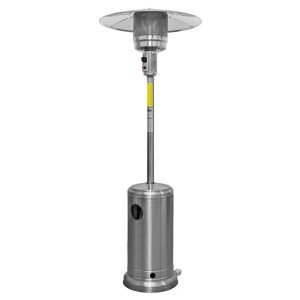Patio Heating Systems Explained In Fewer Than 140 Characters
Patio Heating Systems: A Comprehensive Guide
As outdoor living spaces evolve into extensions of our homes, developing a comfortable and inviting atmosphere is vital. Among the most reliable methods to accomplish this convenience is by executing patio heater. These systems enable friends and families to enjoy their outdoor spaces year-round, no matter the chill of the night air. This post will explore different patio heater offered, their functions, advantages, and important considerations for selecting the right one.
Kinds Of Patio Heating Systems
Patio heating unit can be found in numerous types, each with its own distinct qualities. Below are a few of the most typical types:
Type
Description
Pros
Cons
Electric Patio Heaters
These heaters run using electricity and be available in wall-mounted, portable, and freestanding designs.
Easy to install and use; instant heat; safe; low maintenance
Restricted heat variety; may increase electricity costs
Gas Patio Heaters
Usually powered by propane or natural gas, gas patio heaters supply substantial heat output and can cover large areas.
High heat output; can last longer than electric models; suitable for big gatherings
Requires gas supply; can be less portable; security interest in gas leaks
Infrared Heaters
Infrared heaters discharge thermal radiation that directly warms objects and individuals instead of the surrounding air.
Efficient; instant heat; minimal heat loss; eco-friendly options offered
Limited area of impact; initial cost may be high
Fire Pits
Frequently made from stone or metal, fire pits offer warmth and ambiance, creating a cozy environment.
Natural ambiance; versatile (cooking choice); gather around for social interactions
Security threats with open flame; require wood or propane supply
Patio Umbrellas with Heaters
These are umbrellas fitted with built-in heating aspects, best for shaded locations.
Hassle-free; combines shade and heating; portable
Less reliable in windy conditions; restricted location; can be expensive
Secret Features to Consider
When picking a patio heating system, it is vital to evaluate numerous features based upon individual choices, budget plan, and outdoor space requirements. Here are some aspects to consider:
Heating Capacity: Measured in BTUs (British Thermal Units), this figures out the heat output of the heater. Select a heater with sufficient BTUs for your outdoor size.
Fuel Type: Decide between electrical, gas, or wood-burning options based upon benefit, availability, and effectiveness.
Mobility: If movement is crucial, look for lightweight or wheeled designs for easy transport.
Maintenance: Consider the upkeep required for each type. Electric heaters usually require less upkeep than gas or wood options.
Security Features: Look for systems with security cut-offs, protective screens, and materials that can hold up against outdoor conditions.
Advantages of Patio Heating Systems
Patio heating unit use numerous benefits, allowing property owners to take full advantage of the usage of their outdoor living areas. Some advantages include:
- Extended Outdoor Use: Heaters permit more time spent outside, even throughout cooler seasons.
- Increased Comfort: Provide a warm and welcoming environment for gatherings, parties, or quiet nights.
- Improved Aesthetics: Many heater styles include a stylish touch to outdoor decor.
- Increased Property Value: Homes with well-equipped outdoor areas might draw in higher value and appeal to possible buyers.
- Versatile Options: With numerous design and styles readily available, there is a heating service for every single type of outdoor setting.
FAQs About Patio Heating Systems
1. Just how much does it cost to operate a patio heater?
- Electric Models: This depends on the local electrical power rates and usage time. Typically, running an electrical heater can cost in between ₤ 0.10 to ₤ 0.50 per hour.
- Gas Models: Propane costs vary, but a 20-pound tank generally lasts about 8-10 hours, costing around ₤ 20-₤ 30 to fill.
2. Are patio heaters safe to utilize?
The majority of modern patio heaters are designed with security features. However, it's vital to follow safety protocols, such as sticking to clearances from flammable objects, utilizing on steady surfaces, and guaranteeing correct ventilation for gas models.
3. Do patio heaters work in windy conditions?
The majority of patio heaters can offer warmth in light winds, however strong gusts can decrease their effectiveness and safety. For high-wind areas, consider more stable designs or utilize wind guards.
4. Can I use a patio heater inside?
Utilizing outdoor heaters indoors is not recommended due to carbon monoxide gas dangers, particularly with gas heaters. Always confirm fireplacesandstoves.uk 's intended use guidelines before installation.
5. How do I keep my patio heater?
Regular upkeep is important to ensure longevity and efficiency:
- For electrical heaters, inspect and clean the heating component routinely.
- Gas heaters need to have their gas lines examined for leaks and filters cleaned up.
- Fire pits ought to be cleaned up after usage and examined for any residue or ash accumulation.
Patio heating systems play an essential role in transforming outdoor spaces into comfy and inviting environments. With a variety of options, each with distinct benefits and functions, homeowners can choose the perfect system based on their needs, choices, and particular outdoor conditions. By buying a reliable patio heater, one can optimize pleasure of their outdoor space throughout the year. Whether hosting summertime barbecues or cozying up on cool nights, a warmed patio welcomes togetherness, relaxation, and satisfaction, making it a valuable addition to any home.
